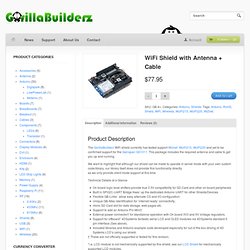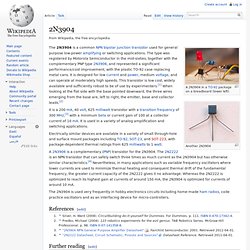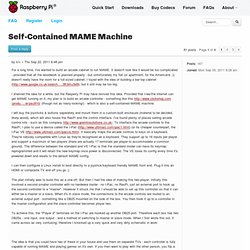

Raspberry Kiosk - 03 - Printing a receipt with the Raspberry Pi. CAAD Embedded hosted by ETH Zürich - ChinaNode. Home Automation is no longer a new word to us. There have been lots of different approaches to realize this kind of system. Here, based on Arduino, WIZnet 5100 and RFM12 wireless module, we are trying to set up a low cost, remote control Home Automation platform. This system consists of three major parts. The first one is the Arduino Web Server which allows the access form the Internet. The second one is wireless controller attached to the home applicants. Prototype of three major parts. With the help of Arduino Web Server, you can access the system easily by opening a browser on your PC or smart phone. The net work of the system. The server consists of five parts: Arduino Mega 1280 RTC module Ethernet shield SD card shield RFM12 shield.
The components of the Ardunio Web Server Mainly, the server performs two kinds of tasks. Tasks of the server. Lifeboat Farm » The finished Arduino wireless water sensor. WiFi Shield with Antenna + Cable. The GorillaBuilderz WiFi shield currenlty has tested support Wiznet WizFi210, WizFi220 and yet to be confirmed support for the Gainspan GS1011.

This package includes the required antenna and cable to get you up and running. We want to highlight that although our shield can be made to operate in server mode with your own custom code/library, our library itself does not provide this functionality directly as we only provide client mode support at this time. Technical Details at a Glance † These are not officially supported or tested for this revision. *i.e. Arduino Project 10 (2D/3D pictures) – My XBee/Arduino based Wireless Sensor Network (Uno/Mega 2560, 1.0, XBee Series 2)
1.

Introduction I developed this WSN for a coursework on my MSc and I’m hoping others will find this useful or at least interesting I’ve just installed the first parts of this WSN back home to collect sensor data from various outbuildings and it will be part of my new Arduino controlled greenhouse project. I’ll try to port the storage and reporting backend to a Raspberry Pi later this week, initial trials seem to suggest that it should cope well with this task for my size of network. I’ve also included a zip (9.7, bottom of the post, just above the reference section) with all my source code for this project which includes: all Arduino sketchesthe database structure and data samplesthe php file for Flotthe php file used by the concentrator to upload data into the MySQL database 2. 2N3904. A 2N3904 in a TO-92 package on a breadboard (lower left) Another 2N3904 The 2N3904 is a common NPN bipolar junction transistor used for general purpose low-power amplifying or switching applications.

The type was registered by Motorola Semiconductor in the mid-sixties, together with the complementary PNP type 2N3906, and represented a significant performance/cost improvement, with the plastic TO-92 case replacing metal cans. It is designed for low current and power, medium voltage, and can operate at moderately high speeds.
This transistor is low cost, widely available and sufficiently robust to be of use by experimenters.[1] When looking at the flat side with the base pointed downward, the three wires emerging from the base are, left to right, the emitter, base and collector leads.[2] It is a 200 mA, 40 volt, 625 milliwatt transistor with a transition frequency of 300 MHz,[3] with a minimum beta or current gain of 100 at a collector current of 10 mA. References[edit] Further reading[edit] Enc28j60-Arduino. Self-Contained MAME Machine. For a long time, I've wanted to build an arcade cabinet to run MAME.

It doesn't look like it would be too complicated - provided that all the woodwork is planned properly - but unfortunately my flat (or apartment, for the Americans ;)) doesn't really have the room for a full-sized cabinet. I toyed with the idea of building a bar-top cabinet ( but it still may be too big. World Domination Using Arduinos and Websockets « Kevin Rohling's Blog. Arduino Websocket Client Arduino Pusher Client Pusher – Real Time Push Notifications Follow Me On Twitter: @kevinrohling If you don’t have your very own Arduino yet you should get one.

What exactly are you waiting for? Arduinos are tons of fun, especially once you hook up some servos and start driving them around. Add a few pieces of military grade weaponry and you have your very own deathbot! One of the first things you have to figure out once you’ve decided to personally catalyze the robot apocalypse is how to remotely control your robots, i.e. tell them when to turn left, turn right, stop, and of course… fire rocket launchers.
The solution I came up with was to use Pusher, a real-time push notification service that runs over WebSockets. Building the WebSocket Client WebSockets are an interesting hybrid between HTTP and raw TCP connections. Client Requests a WebSocket Connection GET /app/yourpusherapikey? Server responds indicating that the upgrade was successful. APDuino.org.